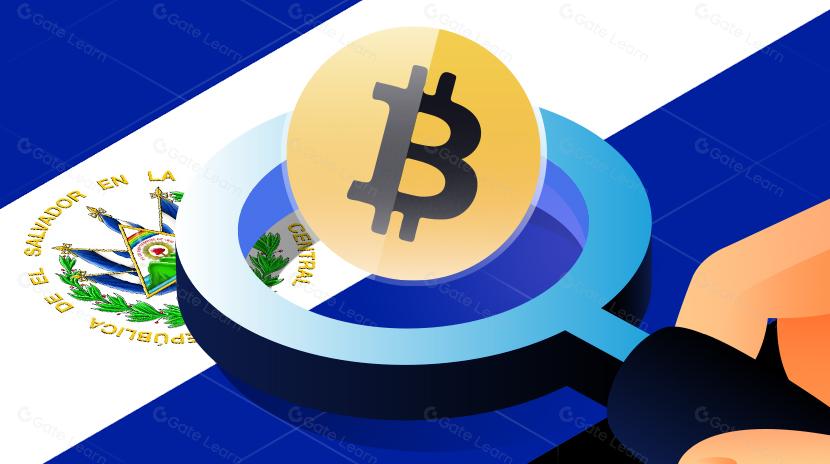Refleksivitas di Pasar yang Terfragmentasi: Mengapa Siklus Ini Lebih Memprioritaskan Kebreadthan Daripada Kedalaman?
Kembali pada tahun 2021, refleksivitas pasar sebagian besar didorong oleh beberapa narasi dominan, seperti DeFi dan NFT, bersama dengan kelimpahan likuiditas.
Cepat maju ke hari ini, dan pasar telah menjadi terfragmentasi secara nyata.
Jadi, mengapa siklus ini tampak memiliki lebar tapi kurang kedalaman?

Sudah lama sejak terakhir kali saya menulis di sini, tetapi dengan tahun 2025 kini di depan mata, saya pikir saya akan mengambil waktu sebentar untuk berbagi beberapa pemikiran terbaru saya—hanya pembaruan santai dari seorang penggemar pasar biasa.
Meskipun begitu, tidak ada dari apa yang saya bagikan di sini seharusnya dianggap sebagai saran investasi. Di dunia kriptocurrency yang kacau ini, pastikan untuk melakukan due diligence dan penelitian menyeluruh sendiri sebelum melakukan investasi apa pun.
Pengantar
Pasar crypto pada tahun 2025 terasa sangat berbeda dari tahun 2021. Saat itu, beberapa narasi dominan seperti DeFi dan NFT, dipasangkan dengan likuiditas yang melimpah, mendorong momentum pasar yang kuat. Saat ini, pasar terfragmentasi menjadi narasi kecil yang tak terhitung jumlahnya. Setiap hari membawa "token panas" dan konsep baru, tetapi likuiditas tersebar sangat tipis sehingga refleksivitas — sementara masih ada — telah kehilangan banyak dampak terkonsentrasinya. Sebaliknya, itu tersebar di banyak token dan narasi, yang mengarah ke pasar yang "luas tapi dangkal." Banyak aset melihat keuntungan kecil, tetapi hanya sedikit yang mempertahankan momentum kenaikan yang berarti.
Artikel ini mengeksplorasi bagaimana refleksivitas berfungsi di lanskap yang terfragmentasi ini, mengapa likuiditas kini menjadi 'pembunuh tak terlihat' dari siklus ini, dan bagaimana saya memposisikan diri dalam fase pasar ini.
Tahap Apa yang Kita Masuki?
Saya percaya kita entah berada di ujung dasar atau sudah mencapainya (meskipun ini mungkin hanya harapan untuk membenarkan kepemilikan saya). Sebagian besar sektor mengalami koreksi tajam tahun ini, dengan AI dan token meme menderita yang paling keras, turun sebanyak 80%-90%.

Jika Anda telah mengejar narasi atau berburu "token besar berikutnya," Anda mungkin merasakan fragmentasi pasar dan likuiditas yang tipis. Sejak dimulainya pasar bullish ini (yang saya pribadi tandai sebagai Januari 2024, meskipun orang lain mungkin menunjuk ke November 2022 atau Januari 2023 pasca-FTX), kita telah melihat ledakan narasi di luar BTC, ETH, dan DeFi.
Koin Hewan:
Token bertheme hewan, meta-naratif asli, tetap aktif. Dogecoin dan Catcoin sendirian telah melahirkan banyak subkategori.
Aset Dunia Nyata (RWA):
Populer di kalangan keuangan tradisional (TradFi), kategori ini dipasarkan sebagai perdagangan “fundamental” daripada hip spekulatif. Proyek kunci: $ONDO, $PRCL, $CPOOL.
Token AI (Agen Cerdas):
Awalnya difokuskan pada proyek-proyek seperti $RNDR dan $AGIX, narasi AI telah beralih ke agen cerdas dan kerangka kerja mereka. Proyek kunci: $VIRTUAL, $ARC, $AI16Z.
DeFAI (AI Terdesentralisasi):
Sebuah subkategori dari AI yang fokus pada agen cerdas yang melakukan tugas DeFi. Proyek kunci: $GRIFFAIN, $ANON.
Token Presiden:
Mudah dimengerti. Contoh: $TRUMP, $MELANIA.
Narasi Pendiri Web2
Jika Anda aktif di Crypto Twitter (CT), Anda mungkin sudah menemui cerita ini: para pendiri Web2 memulai "busur penebusan" di dunia kripto. Contoh yang mencolok termasuk proyek-proyek seperti $VINE dan $JELLY.
Apa yang saat ini menarik perhatian hanyalah puncak gunung es. Anda mungkin sudah melupakan bahwa hanya beberapa bulan yang lalu, kita melihat tren seperti 'topi koin' (wifhats), koin selebriti, token bertema kebun binatang, koin hewan lucu, 'koin hewan untuk eutanasia,' koin kuant, koin bayi, koin senior, koin remaja, koin TikTok, dan banyak lagi. Narasi-narasi ini terus muncul satu demi satu, tanpa ada tanda-tanda berakhir.
Melangkah mundur, kita dapat memeriksa beberapa metrik kunci untuk mendapatkan perspektif yang lebih luas: TOTAL3, BTC.D, dan pasokan stablecoin.
TOTAL3
TOTAL3 mewakili kapitalisasi pasar total kripto (tidak termasuk BTC dan ETH). Pada dasarnya mengukur nilai gabungan dari semua altcoin, stablecoin, dan meme coin. Saat ini, metrik ini mendekati puncaknya dari November 2021.

Dominasi Bitcoin (BTC.D)
BTC.D melacak pangsa Bitcoin dari total kapitalisasi pasar kripto. Saat ini, stabil di 58%, turun dari 61% pada November 2024.

Antara November 2024 dan Januari 2025, pasar mengalami "musim altcoin" yang dipimpin oleh aktivitas on-chain, terutama berpusat di sekitar AI dan tren koin meme. Selama waktu ini, BTC. D turun, TOTAL3 naik secara signifikan, dan pasokan stablecoin juga tumbuh, sekarang mendekati $215 miliar.

Refleksivitas dalam Siklus Pasar Sebelumnya
George Soros menjelaskan refleksivitas sebagai suatu proses di mana loop umpan balik positif antara harapan pasar dan fundamental ekonomi menyebabkan harga deviasi secara signifikan dan persisten dari tingkat keseimbangan mereka. Dalam istilah yang lebih sederhana, ini adalah gagasan bahwa “harga membentuk narasi, bukan narasi yang membentuk harga.”
Pasar kripto adalah tempat yang ideal untuk refleksivitas karena:
- Kekurangan metrik valuasi yang jelas: Harga bergantung sepenuhnya pada spekulasi;
- Likuiditas rendah: Kedalaman pasar terbatas;
- Ekonomi perhatian: Hype yang didorong oleh pengaruh di platform seperti Crypto Twitter (CT), TikTok, dan grup Telegram.
Pada tahun 2017, booming ICO mendominasi; pada tahun 2020, semuanya tentang pertanian hasil DeFi; dan pada tahun 2021, memecoin dan NFT menjadi pusat perhatian. Misalnya, antara Januari dan Mei 2021, Dogecoin ($DOGE) melonjak hampir 200x.

Dogecoin adalah contoh buku teks dari refleksivitas di pasar kripto, memperlihatkan bagaimana hal-hal telah berkembang seiring waktu. Meskipun tidak memiliki nilai intrinsik atau kerangka penilaian, itu menjadi pelopor untuk apa yang sekarang kita kenal sebagai “memecoin.”
Dukungan dari tokoh-tokoh terkemuka—terutama dari Elon Musk—memicu siklus histeria dan permintaan yang saling menguatkan.

Dulu, likuiditas stablecoin mirip dengan tingkat hari ini, tetapi ada lebih sedikit opsi investasi, yang mengarah pada efek 'teater penuh' di mana modal dan spekulasi terkonsentrasi kuat pada Dogecoin. Kebaruan pasar, dikombinasikan dengan antusiasme yang didorong oleh ritel, kebosanan yang disebabkan oleh pandemi, dan cek stimulus, mengurangi skeptisisme dan memungkinkan budaya meme mendominasi.
Yang luar biasa adalah bahwa kegilaan ini hampir sepenuhnya didorong oleh perdagangan spot ritel, bukan derivatif berdaya ungkit. Pada puncak Dogecoin, minat terbuka (OI) hanya sebesar $60 juta. Sebaliknya, hari ini, meskipun Dogecoin diperdagangkan pada separuh harga puncaknya, minat terbuka telah melonjak menjadi lebih dari $1.5 miliar.
Refleksivitas di Pasar Hari Ini
Pasar kripto pada tahun 2024 telah berbeda dari pola di masa lalu. Bitcoin tetap tangguh, sementara sebagian besar altcoin kesulitan untuk menarik perhatian.
Pasar nampaknya terganggu oleh gangguan hiperaktivitas perhatian (ADHD), dengan investor terus-menerus beralih fokus dari satu narasi baru yang mencolok ke yang berikutnya. Akibatnya, tidak ada tren tunggal yang mampu mempertahankan momentum.
Sementara likuiditas stablecoin saat ini sebanding dengan tahun 2021, refleksivitas telah tereduksi dan kesulitan untuk berkembang di tengah banyaknya narasi bersaing. Ini termasuk kecerdasan buatan, infrastruktur fisik terdesentralisasi (DePIN), aset dunia nyata (RWAs), dan banyak memecoin. Pelemahan refleksivitas dapat dikaitkan dengan beberapa faktor:
- Modal yang terfragmentasi: Dana tersebar tipis di ratusan token small-cap, melemahkan loop umpan balik yang mendorong refleksivitas.
- Saturasi leverage: Penggunaan kontrak perpetual (perps) yang semakin meningkat telah membuat minat terbuka (OI) menjadi indikator kritis.
- Kesadaran risiko yang meningkat: Guncangan pasar tahun 2022 (misalnya, kejatuhan LUNA dan keruntuhan FTX) telah membuat para investor lebih waspada terhadap permainan 'uang bodoh' yang spekulatif.
Sebagian besar token atau narasi baru akhirnya mengikuti lintasan yang sama dengan Bitconnect—mengalami momen-momen hype singkat sebelum ambruk dengan cepat.

"Musim altcoin" tradisional menjadi semakin sulit dipahami. Tren modal yang dulu dapat diandalkan berputar dari Bitcoin ke altcoin telah gagal terwujud dalam siklus ini.
Seperti @intuitioDiperhatikan, berbeda dengan siklus sebelumnya, Ethereum dan altcoin lainnya secara signifikan tampil di bawah kali ini... (dan ya, Ethereum masih belum menembus rekor tertingginya).

Pasar kripto hari ini lebih ditentukan oleh luasnya daripada kedalamannya. Banyak token mengalami kenaikan harga yang singkat dan kecil, tetapi kepercayaan pada setiap token tunggal dangkal dan kurang memiliki daya tahan.
Untuk memahami seberapa terpecahnya pasar, lihatlah akhir tahun 2024: dominasi Bitcoin naik ke level yang tidak pernah terlihat sejak awal 2021. Pada Januari 2025, dominasi Bitcoin mencapai 65%. Hal ini terjadi bahkan ketika total kapitalisasi pasar kripto terus tumbuh, yang berarti kinerja token lain jauh tertinggal.

Meskipun ada banyak token dengan berbagai tingkat aktivitas, sangat sedikit yang berhasil mempertahankan momentum dan mengungguli Bitcoin. Sebenarnya, sepanjang sebagian besar tahun 2024, Indeks Musim Altcoin tetap kuat di zona “Musim Bitcoin”.
Munculnya Attentionomics
Dalam siklus pasar ini, “perhatian” telah menjadi aset paling berharga. Fundamental tradisional dan tokenomics telah terlupakan oleh meme, tren viral, dan hip hype.
Fenomena ini, dikenal sebagai “Attentionomics,” menunjukkan bahwa nilai dari banyak token ditentukan lebih oleh kemampuannya untuk menarik perhatian daripada oleh fundamental yang mendasarinya.
Di pasar yang dipenuhi ribuan token, perhatian manusia telah menjadi satu-satunya sumber daya yang benar-benar langka. Proyek yang berhasil menarik perhatian seringkali melihat harga mereka melambung.
Saat @redphonecryptodengan tepat mengatakannya:
“Dalam dunia Attentionomics, kemampuan token untuk menarik perhatian lebih penting daripada metrik lainnya. Semakin baik dalam menarik perhatian, semakin tinggi potensi keuntungannya. Dan kemampuan ini dapat diukur dengan beberapa faktor yang sangat nyata dan dapat diamati.”
Roda Gila Perhatian
Di pasar kripto yang didorong oleh media sosial saat ini, “Attentionomics” beroperasi sebagai “roda gila perhatian” yang memperkuat diri. Siklusnya biasanya terjadi seperti berikut:
Percikan Viral: Sebuah meme atau peristiwa memicu rasa ingin tahu dan menciptakan narasi baru, mendorong seseorang untuk meluncurkan token. Sebagai contoh, “Ghiblification” adalah contoh yang mencolok.

Hype Awal: Spekulan awal bergegas masuk, menyebabkan harga token melonjak. Di dunia kripto, pergerakan harga itu sendiri menjadi konten. Grafik yang menunjukkan peningkatan harga sepuluh kali lipat dalam beberapa jam mulai beredar di media sosial, menarik lebih banyak perhatian.

Harga sebagai Bukti Hype: Lonjakan harga dianggap sebagai bukti kekuatan meme, menarik gelombang kedua pembeli yang ingin bergabung dengan "moonshot" berikutnya. Arus likuiditas mendorong harga naik, dan segera, token tiruan (token Beta) muncul.
Siklus Umpan Balik: Siklus perhatian → harga → lebih banyak perhatian ini dapat terjadi dengan sangat cepat, terkadang selesai dalam waktu satu hari setelah meme dibuat.

Masuk ke Arus Utama: Jika kegilaan tumbuh cukup besar, itu meluap di luar komunitas kripto. Liputan media, daftar pertukaran, atau dukungan selebriti memperkuat hype, menciptakan nilai melalui momentum viral.

Siklus refleksif ini mengubah perhatian menjadi bentuk energi potensial. Seperti yang diamati oleh influencer crypto Cobie:
“Orang-orang dalam dunia kripto selalu berbicara tentang kelangkaan—baik itu NFT menciptakan kelangkaan digital atau gagasan bahwa ‘ada 55 juta jutawan tapi hanya ada 21 juta Bitcoin.’ Namun, sejatinya, satu-satunya sumber daya yang langka dalam kripto adalah perhatian. Modal yang mencari risiko sama sekali tidak langka.”
Proyek atau token yang 'memenangkan lotre perhatian' bisa melihat pertumbuhan yang meledak dalam kapitalisasi pasar—sesuatu yang jarang terlihat dalam keuangan tradisional.
Dari Bercandaan hingga Pencipta Kekayaan: Munculnya Shitposts
Merefleksikan tentang token-token paling panas tahun 2024-2025, banyak pada dasarnya adalah "shitpost dengan umpan harga"—lelucon yang berubah menjadi kode kekayaan.

Sebagai contoh, $ROUTINE
$ROUTINE diciptakan semata-mata sebagai lelucon (dan cara untuk menghasilkan uang) berdasarkan topik yang sedang tren. Ironisnya, 'parodi diri' yang jelas ini tidak membuat investor lari. Sebaliknya, hal itu menjadi bagian dari daya tariknya, cocok sepenuhnya dengan humor ironis yang menentukan budaya kripto.
Meskipun demikian, proyek-proyek yang didorong oleh perhatian cenderung memiliki umur pendek. Untuk melawan hal ini, beberapa proyek meme paling sukses telah mulai mencoba menambahkan utilitas nyata atau membangun infrastruktur untuk token mereka.
Tapi apakah strategi ini benar-benar berhasil?
Ambil$PepeSebagai contoh. Tim mengusulkan membangun Pepe Chain khusus dan produk terkait, memanfaatkan komunitasnya yang besar. Dengan menciptakan jaringan Layer 2 (L2) berdasarkan tema Pepe atau pertukaran terdesentralisasi (DEX), pemegang $PEPE dapat mendapatkan lebih banyak cara untuk menggunakan token selain hanya jual beli. Pendekatan ini bertujuan untuk menggunakan pengenalan 'merek' Pepe yang kuat untuk menarik pengguna platform nyata.
Namun, bagi banyak proyek meme, yang disebut “utilitas” seringkali terasa seperti alasan yang ditambahkan setelah lonjakan harga. Meskipun beberapa DEX atau toko merchandise bermerk meme ada, jarang menambahkan nilai jangka panjang yang signifikan ke token. Pada akhirnya, “utilitas” ini seringkali hanya sebagai lapisan tipis untuk kecenderungan spekulatif komunitas.
Dalam kasus-kasus ini, perhatian tetap menjadi pendorong utama, sementara produk aktual menjadi kurang penting.
Kursi Musik Modal
Apa yang terjadi ketika perhatian tidak bertahan lama? Trader memasuki permainan rotasi yang tak pernah berujung.
Dalam dunia kripto, modal terus berpindah dari satu sektor ke sektor lain atau turun ke kurva risiko ke token “peniru” (Beta). Ini telah menjadi strategi umum.
Karena tidak ada satu narasi tunggal yang secara konsisten memberikan pengembalian 10x (terutama bagi mereka yang melewatkan gelombang awal), pendekatan terbaik adalah menaiki serangkaian gelombang kecil.
Fenomena ini bahkan menginspirasi meme "Euthanasia Coaster."

Kami telah melihat hal ini terjadi dalam kehidupan nyata: setelah para pedagang mendapatkan keuntungan besar di $ROUTINE, keuntungan tersebut dengan cepat beralih ke token terkait seperti $SARATOGA (mata uang meme lainnya dari video viral yang sama).
Rotasi uang panas ini menjelaskan mengapa kita melihat siklus pasar yang aneh, seperti satu minggu di mana semua koin meme bertema anjing naik, minggu berikutnya adalah token terkait kecerdasan buatan, dan tiba-tiba token DeFi lama mendapatkan aliran masuk acak karena seseorang mengatakan, "Hei, Yearn belum naik nilainya—mungkin akan naik selanjutnya."
Ini adalah permainan refleks yang cepat.
Spot kenaikan harga,
Beli,
Dorong harga lebih tinggi,
Jual sebelum harga turun.
Kemudian ulangi.
Dari Perdagangan Spot ke Leverage: Perubahan Besar
Sejak tahun 2021, pasar kripto telah mengalami pergeseran besar—munculnya leverage.
Kembali pada tahun 2021, kegilaan Dogecoin (DOGE) dipicu oleh perdagangan spot. Jutaan investor ritel menggunakan cek stimulus mereka untuk membeli DOGE langsung di platform seperti Robinhood dan Coinbase.
Namun, saat ini sebagian besar momentum pasar berasal dari derivatif, terutama kontrak perpetual (Perps) dan opsi. Banyak pedagang sekarang menggunakan margin untuk menempatkan taruhan leverage tinggi di platform seperti Binance dan Bybit.
Ketika minat terbuka (OI) tumbuh menjadi tingkat yang besar, pergerakan harga dapat menjadi sangat volatile.
Sebagai contoh, pada November 2024, Bitcoin melesat dari $75,000 menjadi $90,000 hanya dalam dua hari, didorong oleh beberapa short squeeze. Lonjakan harga semacam ini adalah contoh klasik dari refleksivitas yang didorong oleh leverage.
Celana pendek dilikuidasi → pembelian paksa → harga naik → lebih banyak celana pendek dilikuidasi → diulang.
Namun, mekanisme refleksif ini adalah pedang bermata dua.
Leverage tinggi memperkuat refleksivitas tetapi seringkali menyebabkan pergerakan harga yang tidak sehat dan tidak berkelanjutan.
Sekarang kita melihat ayunan harga yang lebih sering dan ekstrim, jauh melampaui yang wajar. Ayunan ini seringkali dipicu oleh leverage tetapi akhirnya kembali ke rata-rata karena tidak didukung oleh aliran modal baru yang stabil.
Poin utama adalah bahwa meskipun minat terbuka dapat mendorong harga naik, itu tidak selalu berarti uang baru masuk ke pasar. Pada akhirnya, ini lebih merupakan permainan pemain lawan pemain (PvP).
Sebagai contoh, antara November dan Desember 2024:
Total open interest (OI) meningkat sebesar $70 miliar,
Pasokan stablecoin hanya tumbuh sebesar $30 miliar.
Tingkat OI di tahun 2024 jauh melampaui tahun 2021, menunjukkan bahwa refleksivitas hari ini lebih mekanis daripada organik.
Kembali pada tahun 2021, ketika token melonjak, orang membeli dan menyimpan dengan keyakinan. Sekarang, ketika token melonjak, para trader lebih cenderung mengatakan, “Saya long—jangan biarkan saya kena rekt!” sambil siap menjual kapan saja.

Ringkasan
Pasar kripto saat ini ditandai oleh siklus luas atas kedalaman, dengan banyak narasi dan token mengalami siklus mini pertumbuhan mereka sendiri yang terisolasi.
Mungkin kita sedang berada dalam fase transisi, menunggu siklus pasar yang lebih dalam dan lebih bersatu untuk muncul. Perkembangan institusi—seperti persetujuan ETF dan integrasi aset dunia nyata (RWA)—akhirnya bisa memicu lonjakan bullish yang lebih luas, membanjiri pasar altcoin (alts) dengan modal, melepaskan "serbuk kering" stablecoin, mengurangi dominasi Bitcoin (BTC.D), dan memicu "musim alt" klasik.
Pada saat yang sama, fragmentasi pasar yang semakin meningkat mungkin sudah menjadi normal baru, menandakan kematangan industri kripto. Ruang ini telah menjadi begitu besar dan beragam sehingga mengharapkan semua orang untuk FOMO ke dalam perdagangan yang sama tidak lagi realistis. Sudah tidak ada lagi zaman tahun 2017, ketika semua token naik bersama. Saat ini, berkembang di pasar ini membutuhkan selektivitas, kegesitan, dan sejumlah skeptisisme yang sehat.
Tidak peduli ke mana pasar bergerak, refleksivitas akan selalu memainkan peran, meskipun bentuk dan intensitasnya mungkin bervariasi. Tantangannya—dan peluangnya—adalah mengidentifikasi loop umpan balik mana yang hanya hype sementara dan mana yang memiliki potensi untuk berkembang menjadi tren utama.
Saat Anda pikir narasi telah berakhir, mungkin akan membuat kejutan kembali.
Siapa yang menyangka bahwa "koin meme Trump" akan menjadi trending topic? Tapi mereka melakukannya.
Dan ketika Anda berpikir aset itu “terlalu besar untuk gagal,” itu masih bisa jatuh lebih keras lagi (seperti ETH turun lebih jauh dari $1,800).
Saat pasar terus berkembang, saya akan tetap memegang pelajaran yang dipelajari dari siklus ini: tetap fleksibel, tahu kapan harus mundur, dan mendekati setiap narasi dengan skeptisisme.
Benar bahwa menggambarkan pasar sebagai "luas tetapi dangkal" mungkin terdengar seperti keluhan, tetapi itu juga mencerminkan realitas pasar yang matang dengan cara yang tak terduga. Dalam fase berikutnya, kita mungkin melihat kembalinya kedalaman pasar—atau mungkin ruangannya akan terpecah lebih lanjut menjadi ruang-ruang kecil, niche. Bagaimanapun juga, kesempatan akan selalu ada bagi mereka yang siap, sementara jebakan akan tak terhindarkan bagi mereka yang tidak berhati-hati.
Refleksivitas belum hilang—hanya menjadi lebih rumit.
Tetap aman, tetap tajam, dan ketika koin meme Anda berubah menjadi apartemen, jangan lupa melindungi kebebasan Anda. Saya akan meninggalkan Anda dengan kutipan abadi dari @mgnr_io:
Dalam perdagangan subjektif, posisi terbaik seringkali sama sekali tidak ada posisi.
Tidak melakukan apa-apa. Ada lima kesempatan emas setahun—uang gratis tergeletak di tanah.
Ambil itu, lalu kembali melakukan tidak apa-apa.
Itulah bagaimana Anda mencapai pengembalian yang lebih besar dari biasanya.”
Semoga berhasil!
Artikel ini hanya untuk tujuan informasi, berdasarkan fakta dan sumber saat ini, dan seharusnya tidak dijadikan sebagai saran profesional. Selalu lakukan penelitian sendiri dan berkonsultasilah dengan penasihat yang berkualifikasi sebelum membuat keputusan. Penulis tidak bertanggung jawab atas segala konsekuensi yang timbul dari penggunaan informasi di artikel ini.
Penafian:
- Artikel ini dicetak ulang dari [TechFlow]. Semua hak cipta milik penulis asli [serbet]. Jika ada keberatan terhadap cetakan ulang ini, silakan hubungi Gate Belajartim, dan mereka akan menanganinya dengan segera.
- Penafian Tanggung Jawab: Pandangan dan pendapat yang tertuang dalam artikel ini semata-mata milik penulis dan tidak merupakan nasihat investasi apa pun.
- Terjemahan artikel ke dalam bahasa lain dilakukan oleh tim Gate Learn. Kecuali disebutkanGate.com, menyalin, mendistribusikan, atau menjiplak artikel yang diterjemahkan dilarang.
Artikel Terkait

Apa itu Tronscan dan Bagaimana Anda Dapat Menggunakannya pada Tahun 2025?

Apa itu Hyperliquid (HYPE)?

Apa itu USDC?

Apa Itu Narasi Kripto? Narasi Teratas untuk 2025 (DIPERBARUI)

Apa itu Stablecoin?


